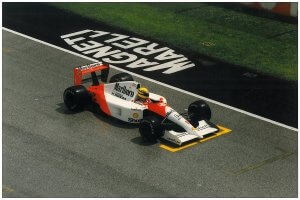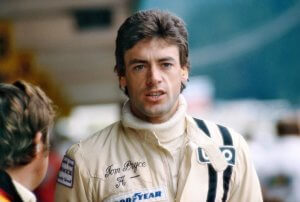Accidents in Formula 1 in the Past Decades

Undoubtedly, one of the most impressive aspects of Formula 1 is the speed that cars can reach. However, this is also one of the reasons why this sport has a high rate of accidents. During the past decades, we’ve witnessed several deaths. In this article, we’ll review the worst accidents in Formula 1.
All motorsport lovers enjoy Formula 1 racing, with those single-seaters spinning at incredible speeds and the best drivers in the world maneuvering on the track. However, when the cars are out of control, every heart watching is paralyzed by fear.
This category has left, throughout its vast history, impressive and lethal accidents. These fatal accidents are still being mourned today. Below we’ll list some of the most notorious ones and we’ll look at the measures that have been taken to avoid similar disasters in the future.
The most tragic accidents in Formula 1
Tom Pryce in South Africa 1977
This accident is one of the most tragic in the history of this category since it not only took the life of the driver but also the race marshal, Jansen Vuuren. In addition, everything happened within meters of the spectators and with the cameras filming the fatal outcome.
It all started when Vuuren and another marshal crossed the track to help the Italian driver Renzo Zorzi, whose vehicle caught fire at the edge of the track. They were behind a hill that prevented people from seeing what was in front of them.

At that moment, Tom Pryce’s car ran over Vuuren and caused an unexpected and fatal outcome. What makes the event even more serious is that Pryce also died due to the head-on impact of the extinguisher that the marshal carried in his arms. Undoubtedly, one of the darkest days of F1.
Ayrton Senna. San Marino 1994: the most remembered accident in Formula 1
Probably the most iconic accident in Formula 1 is the one featuring Senna. The former three-time world champion Ayrton Senna lost his life at the famous Tamburello curve, hitting the front of the vehicle against the retaining wall.
This tragic event has turned Senna into a hero of motorsport. Millions of fans around the world consider him an idol for his bold and courageous driving style. The death of this Brazilian meant a before and after in the safety of the category.
Niki Lauda in Germany 1976
This accident almost cost the life of one of the best drivers of all time. Niki Lauda lost control of his car and crashed into a guardrail at the Nurburgring circuit, which caused the car, with its driver still in the cockpit, to instantly erupt in flames.
The Austrian, three times world champion, suffered first and third-degree burns on his face and arms, as well as damage to his lungs caused by inhaling gases from the fire. After fighting for his life, Lauda returned to drive his Ferrari, just 40 days after the accident!
Fernando Alonso in Brazil 2003
All Spaniards remember this accident, which could’ve been much more serious than it was. Mark Weber’s Jaguar had lost many parts on the track after an accident.
Although the car had been removed, Alonso was not able to dodge the remains. He suffered a huge impact and appeared injured when he got out of his car, but nothing major happened.
Jules Bianchi in Japan 2014
This young French driver lost control of his vehicle because of the water that had accumulated on the Japanese circuit. Unfortunately, he didn’t collide against the wall, but against a crane that was removing the remains of another car.
Nine months later, on July 17, 2015, Bianchi lost his life in Nice, his hometown. It’d been more than twenty years since the last death caused by an accident in Formula 1. The last one had been Ayrton Senna.

Current safety measures for avoiding accidents in Formula 1
During the last two decades, safety experts in the category have worked hard to avoid fatal outcomes due to accidents in Formula 1. To this end, following investigations regarding the accidents, important measures have been taken to protect the well-being of the drivers.
The notable technological advances that have occurred recently allow for better control of the cars and have reduced the risk of serious accidents.
Also, new regulations have been established regarding the use of a front shield. This is placed in front of the car to protect the drivers from possible objects that collide directly against them. However, participants such as champion Sebastian Vettel have spoken out against this.
In short, accidents in Formula 1 have been reduced in large numbers, although it can never be said that absolutely every accident can be avoided. At the moment, at least, the safety of the drivers is the priority and it’s acting accordingly.
Undoubtedly, one of the most impressive aspects of Formula 1 is the speed that cars can reach. However, this is also one of the reasons why this sport has a high rate of accidents. During the past decades, we’ve witnessed several deaths. In this article, we’ll review the worst accidents in Formula 1.
All motorsport lovers enjoy Formula 1 racing, with those single-seaters spinning at incredible speeds and the best drivers in the world maneuvering on the track. However, when the cars are out of control, every heart watching is paralyzed by fear.
This category has left, throughout its vast history, impressive and lethal accidents. These fatal accidents are still being mourned today. Below we’ll list some of the most notorious ones and we’ll look at the measures that have been taken to avoid similar disasters in the future.
The most tragic accidents in Formula 1
Tom Pryce in South Africa 1977
This accident is one of the most tragic in the history of this category since it not only took the life of the driver but also the race marshal, Jansen Vuuren. In addition, everything happened within meters of the spectators and with the cameras filming the fatal outcome.
It all started when Vuuren and another marshal crossed the track to help the Italian driver Renzo Zorzi, whose vehicle caught fire at the edge of the track. They were behind a hill that prevented people from seeing what was in front of them.

At that moment, Tom Pryce’s car ran over Vuuren and caused an unexpected and fatal outcome. What makes the event even more serious is that Pryce also died due to the head-on impact of the extinguisher that the marshal carried in his arms. Undoubtedly, one of the darkest days of F1.
Ayrton Senna. San Marino 1994: the most remembered accident in Formula 1
Probably the most iconic accident in Formula 1 is the one featuring Senna. The former three-time world champion Ayrton Senna lost his life at the famous Tamburello curve, hitting the front of the vehicle against the retaining wall.
This tragic event has turned Senna into a hero of motorsport. Millions of fans around the world consider him an idol for his bold and courageous driving style. The death of this Brazilian meant a before and after in the safety of the category.
Niki Lauda in Germany 1976
This accident almost cost the life of one of the best drivers of all time. Niki Lauda lost control of his car and crashed into a guardrail at the Nurburgring circuit, which caused the car, with its driver still in the cockpit, to instantly erupt in flames.
The Austrian, three times world champion, suffered first and third-degree burns on his face and arms, as well as damage to his lungs caused by inhaling gases from the fire. After fighting for his life, Lauda returned to drive his Ferrari, just 40 days after the accident!
Fernando Alonso in Brazil 2003
All Spaniards remember this accident, which could’ve been much more serious than it was. Mark Weber’s Jaguar had lost many parts on the track after an accident.
Although the car had been removed, Alonso was not able to dodge the remains. He suffered a huge impact and appeared injured when he got out of his car, but nothing major happened.
Jules Bianchi in Japan 2014
This young French driver lost control of his vehicle because of the water that had accumulated on the Japanese circuit. Unfortunately, he didn’t collide against the wall, but against a crane that was removing the remains of another car.
Nine months later, on July 17, 2015, Bianchi lost his life in Nice, his hometown. It’d been more than twenty years since the last death caused by an accident in Formula 1. The last one had been Ayrton Senna.

Current safety measures for avoiding accidents in Formula 1
During the last two decades, safety experts in the category have worked hard to avoid fatal outcomes due to accidents in Formula 1. To this end, following investigations regarding the accidents, important measures have been taken to protect the well-being of the drivers.
The notable technological advances that have occurred recently allow for better control of the cars and have reduced the risk of serious accidents.
Also, new regulations have been established regarding the use of a front shield. This is placed in front of the car to protect the drivers from possible objects that collide directly against them. However, participants such as champion Sebastian Vettel have spoken out against this.
In short, accidents in Formula 1 have been reduced in large numbers, although it can never be said that absolutely every accident can be avoided. At the moment, at least, the safety of the drivers is the priority and it’s acting accordingly.
All cited sources were thoroughly reviewed by our team to ensure their quality, reliability, currency, and validity. The bibliography of this article was considered reliable and of academic or scientific accuracy.
- Roberto Berasategui. La Fórmula 1 llega a las 1000 carreras: 10 accidentes impactantes de los últimos 50 años. Diario Clarín. Disponible en: https://www.clarin.com/deportes/automovilismo/formula-llega-1000-carreras-10-accidentes-impactantes-ultimos-55-anos_0_PBPCo8OO2.html
This text is provided for informational purposes only and does not replace consultation with a professional. If in doubt, consult your specialist.








